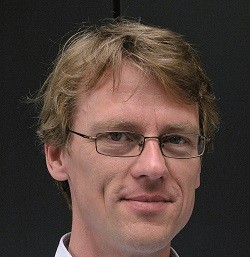Web-based tool helps site operators choose the safest CO2 storage option
MIRECOL (Remediation and mitigation of CO2 leakage) performed a full-fledged analysis of both existing and upcoming remediation and mitigation techniques. Focusing on corrective measures inside or close to the storage reservoir, the project has gathered knowledge about the efficacy of these techniques and has made its conclusions available in a dedicated handbook and web-based tool. Depending on the requirements of the site operator, the tool evaluates each technique according to its longevity, likelihood of success, spatial extent, response time and cost, and even allows for comparisons between different options. Filip Neele, project leader at TNO and coordinator of MIRECOL, discusses the project’s results and expected impact on the development of CCL technology in Europe. Your project focuses on CO2 leakage. Would you say that the latter is a barrier to the implementation of CCS technology? The risk of CO2 leaking from its reservoir is not a barrier to the implementation of CCS. Proper site selection and site design will minimise this risk, while any remaining risk will be managed through monitoring. In the unlikely case where leakage does occur, site operators can deploy corrective measures. The MIRECOL project has increased the number of options that are open to them. What were the main findings from the project related to existing and upcoming mitigation techniques? The main result from the project is that a storage site operator has many more options for corrective actions than those currently listed in corrective measures plans. The project has provided the starting point for storage site operators to build their corrective measures plan during site development and permit application, as well as the basis for deciding on suitable corrective actions should such a need arise. Is there a specific technique coming out as the best option? There is no single, best technique. In some cases changing the injection strategy will be sufficient, while in other cases a well workover may be required. The feasibility and efficacy of a specific corrective measure depend on the details of the specific storage site and of the irregularity that has occurred, as well as on the conditions at the surface where activities around the well or wells may be limited. The MIRECOL project studied a large number of corrective measures that, together, cover a wide range of potential undesired events in or near the reservoir. While a real event in a real storage reservoir will always be different from the scenarios covered in the project, the results from the project will be useful to operators when making a first selection amongst the available techniques. What can you tell us of the results of your field demonstrations? There were two pilot sites used by the MIRECOL project: the offshore K12-B gas field in the Netherlands (operated by project partner ENGIE) and the Ketzin site in Germany (operated by project partner GFZ). These sites were used to study the efficacy of back-producing-injected CO2 as a corrective measure. At a third site — the Bečej CO2 field in Serbia — sealant material developed within the project was tested. This injection test was executed by MIRECOL partner NIS (Serbia); the test produced promising results, which form the basis for further, larger-scale testing. What do you hope will be the impact of MIRECOL on the sector? The project has studied a large number of potential corrective measures, each in a large number of realistic scenarios. To make this dataset available to site operators, as well as to regulators, the project team has developed a web-based tool. From the database of results, the tool selects a scenario that best matches the situation defined by the user and shows the performance of relevant corrective measures. With guidance from operators in the project consortium, the tool was developed so as to enable its use by future storage site operators when building their corrective measures plan, or by operators and regulators to discuss available options in the case of an undesired event in or near the reservoir. All reports produced by the project team are available from the project site: an online corrective measures ‘handbook’ provides easy access to these reports. What are your plans now that the project is completed? The project team will disseminate project results at conferences and events focusing on CCS. The project website will provide access to the web-based handbook and to the web-based tool which will be maintained and improved thanks to input from users. The actual impact of the MIRECOL project, at least in Europe, is expected when CCS projects are developed and start operating. MIRECOL Funded under FP7-ENERGY project website
Countries
Netherlands



